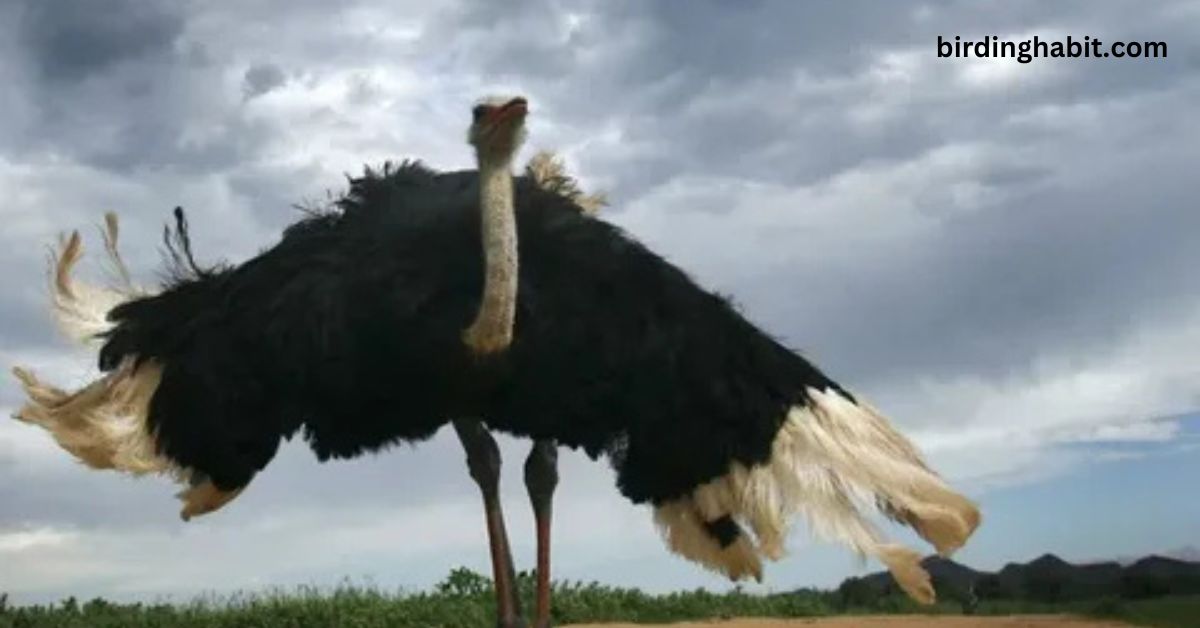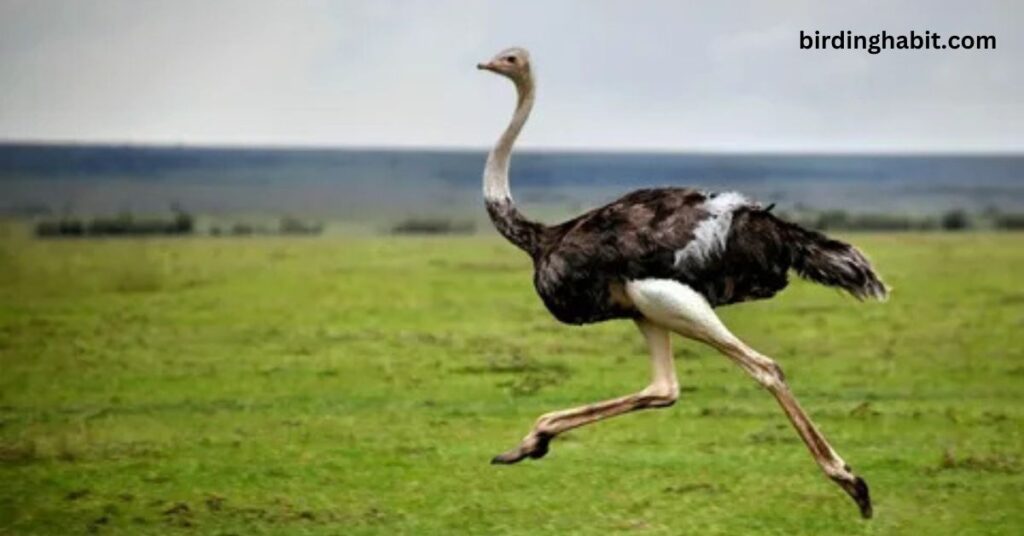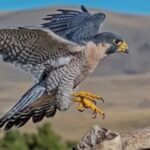When we think of birds, the image of soaring high in the sky typically comes to mind. Birds are often celebrated for their ability to fly, a characteristic that distinguishes them from many other creatures.
But what about the ostrich? Is it a flying bird? Despite being classified as a bird, the ostrich defies the conventional definition of flight.
In this article, we’ll explore the unique characteristics of the ostrich, its evolution, and why it’s grounded despite being a member of the avian family.
The Ostrich: A Bird with Many Surprises
The ostrich (Struthio camelus) is the largest and heaviest living bird in the world, native to the open plains and deserts of Africa. Unlike smaller birds, ostriches have evolved in a way that makes them excellent runners rather than fliers.
While they are classified as birds due to certain key anatomical features, such as feathers and laying eggs, their size and physical structure render them incapable of flight.
Physical Characteristics That Hinder Flight
To understand why ostriches cannot fly, we need to examine their physical traits. Several factors contribute to their flightless nature:
- Size and Weight: An adult ostrich can weigh anywhere between 220 to 350 pounds (100 to 160 kilograms). This massive size, combined with long, muscular legs, makes it virtually impossible for the ostrich to generate the lift needed for flight. Most flying birds have relatively lightweight bodies that are adapted to minimize drag and maximize lift.
 While ostriches have wings, they are not built for flying. Their wings are relatively small compared to their large bodies, and the muscles controlling these wings are not as developed as in flying birds. Ostriches primarily use their wings for balance and maneuvering when running at high speeds or making sharp turns.
While ostriches have wings, they are not built for flying. Their wings are relatively small compared to their large bodies, and the muscles controlling these wings are not as developed as in flying birds. Ostriches primarily use their wings for balance and maneuvering when running at high speeds or making sharp turns.- Breastbone Structure: In most flying birds, the breastbone (sternum) is keeled, meaning it has a prominent ridge that provides a large surface area for the attachment of powerful flight muscles. However, in ostriches, the breastbone is flat, which significantly reduces the capacity for flight muscle attachment.
The Evolutionary Trade-Off
The ostrich’s inability to fly is the result of millions of years of evolutionary adaptations. Early bird ancestors, such as Archaeopteryx, could fly, but over time, the ancestors of the ostrich evolved to become specialized for life on the ground.
As these birds grew larger and heavier, their need for flight diminished. Instead of flying, ostriches adapted to their environment by becoming incredibly fast runners.
Ostriches are capable of reaching speeds of up to 45 miles per hour (72 km/h) in short bursts, making them the fastest-running bird on land. Their powerful legs are built for running, with large, muscular thighs and long strides.
These adaptations allow them to escape predators, maintain dominance over their territory, and cover vast distances in search of food and water.
Why Aren’t Ostriches Flying Birds?
The term “flying bird” typically refers to birds that are capable of sustained flight. Birds like eagles, sparrows, and pigeons have the necessary anatomical features, such as a keeled breastbone and lightweight frames, to achieve flight. On the other hand, the ostrich’s body structure, which prioritizes speed and endurance on land, does not support this ability.
So, while ostriches are indeed birds, they are not classified as flying birds. They belong to a group of birds known as ratites, which includes other flightless birds like emus, kiwis, and penguins. Ratites share certain characteristics, such as flat breastbones and a lack of a keel, which prevent them from flying.
Flightless Birds and Their Unique Roles
Despite their inability to fly, flightless birds like the ostrich play vital roles in their ecosystems. Ostriches are herbivores that help maintain the balance of vegetation in their habitats.
They feed on a variety of plants, seeds, and fruits, often consuming large amounts of food to sustain their energy needs.
Their size and strength also make them key players in their ecosystems, as they are able to fend off most predators with their powerful legs and sharp kicks.
Ostriches are also known for their distinctive behavior. During mating season, males perform elaborate dances and display behaviors to attract females, adding a unique dimension to their role in nature’s reproductive cycle.
Conclusion: The Remarkable Ostrich—A Grounded Giant
The ostrich, though incapable of flight, is an extraordinary example of nature’s adaptability. As the largest and heaviest living bird, it has evolved to excel in other ways, particularly through its remarkable running abilities.
With strong, muscular legs capable of reaching impressive speeds, the ostrich has become a master of the ground, using its agility and strength to evade predators and navigate its environment.
While the ostrich’s inability to fly sets it apart from many other bird species, it highlights the diversity of adaptations found within the avian world.
Its flightless nature is not a disadvantage but rather a unique feature that has allowed it to thrive in its specific ecological niche.
Whether it’s through its powerful legs, distinctive behaviors, or role in maintaining the balance of its habitat, the ostrich proves that flight isn’t the only way to survive and thrive as a bird.
Far from being a limitation, the ostrich’s grounded existence is a testament to the wonders of evolution and the many ways life on Earth can adapt to its surroundings.


